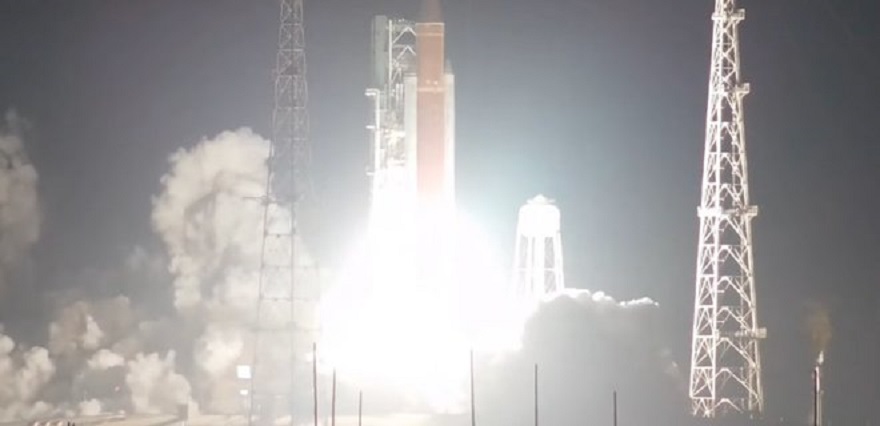The Artemis I test mission successfully launched from the Cape Canaveral cosmodrome on the morning of November 16. The SLS rocket successfully launched the Orion spacecraft and an additional payload into orbit.

Successful launch of Artemis I
The first mission of the program to return people to the Moon has begun. On November 16, at 8:47 a.m. GMT+2, a Space Launch System (SLS) rocket was launched from the launch pad at the Canaveral Cosmodrome. It put the Orion spacecraft, the European service module and an additional payload into orbit.
This mission is a test mission. There is not a single living creature on board. The main task of the first flight is to test the technology, on which human lives will depend on the next mission, which is planned to take place in about a year.
The launch took place according to plan immediately after the next launch window opened — a period of time when the relative position of the Earth and the Moon allows flying along the developed trajectory.
A few minutes after the launch, two solid-fuel boosters separated from the rocket and, according to the flight program, fell into the ocean. Acceleration continued with the help of the main block of four propellers. However, the payload soon disconnected from the main unit.
The beginning of the flight
After Orion was in Earth orbit, its own mission began. The payload has its own engine. After the device deployed the solar arrays, power appeared on board. Then, according to the flight program, the engines should be turned on, which will take the device on a trajectory to the Moon.
When the latter is reached, the device will split. Numerous small vehicles that make up its secondary load will fly to perform their own missions. And the Orion spacecraft itself will perform a series of complex maneuvers near the Earth’s moon.
In total, its flight will last 26 days. So, at the beginning of December, it should return to Earth and its capsule will make a soft landing with the use of parachutes. This is how a manned flight will be performed next time.
According to www.nasa.gov
Follow us on Twitter to get the most interesting space news in time
https://twitter.com/ust_magazine
